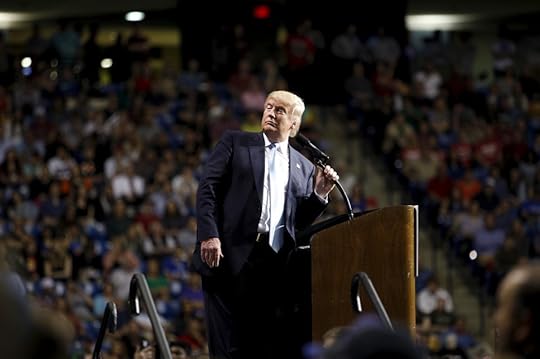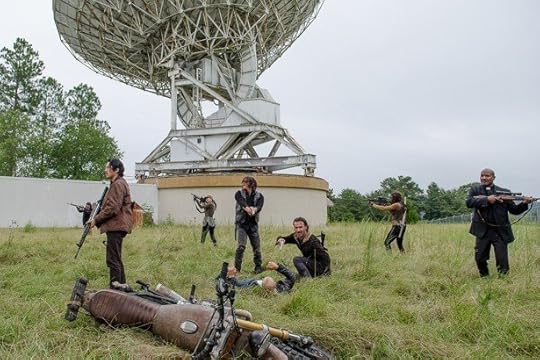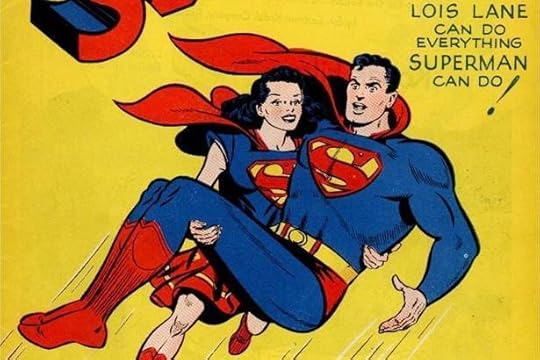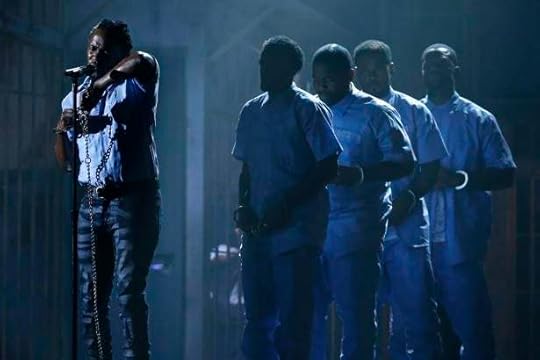Atlantic Monthly Contributors's Blog, page 212
March 14, 2016
Trump Can't Tell the Truth About Violence at His Rallies

Donald Trump’s supporters often laud him for “telling it like it is,” or for his willingness to challenge political correctness. But the many stories Trump has told about violence at his rallies shows his tendency to tell it like he wishes it would be, in a way that is factually—to say nothing of politically—incorrect.
Related Story

The Lurking Menace of a Trump Rally
On Friday night, Trump postponed his rally in Chicago, after thousands of protestors showed up and threatened to take over the event; fistfights broke out on the floor of an arena at the University of Illinois at Chicago. In a statement, Trump said he’d decided to call off the event after consulting with law enforcement. But the Chicago Police Department said that neither it nor the UIC police had been involved in any conversation, and CPD insisted it could handle the situation. There are reasons to doubt that CPD was in control—there were those fistfights, of course—but the statement raised questions about Trump’s veracity.
Those questions grew louder when it happened again on Sunday, when Trump canceled a rally in Kansas City. He said local police had asked him to cancel it out of safety concerns. Once again, local authorities publicly disputed his account:
No. We did not ask him to cancel. https://t.co/ASUi1V0XlV
— KC City Manager (@KCMOManager) March 13, 2016
On Saturday, in Dayton, Ohio, a young man rushed the stage while Trump was speaking. Secret Service agents had to hustle to get in position around Trump. Trump promptly shared a video of the stagerusher, Thomas DiMassimo, set to jihadi music:
USSS did an excellent job stopping the maniac running to the stage. He has ties to ISIS. Should be in jail! https://t.co/tkzbHg7wyD?ssr=true
— Donald J. Trump (@realDonaldTrump) March 12, 2016
The video was a hoax. Pressed by Chuck Todd about passing along the video, Trump shrugged: “All I know is what's on the Internet.”
Last week, Trump and his campaign manager Corey Lewandowski repeatedly denied that Lewandowski had grabbed Breitbart reporter Michelle Fields, even as more and more evidence accumulated that appeared to substantiate Fields’s allegations.
On Monday, Trump claimed there’s no violence at his events. “The press is now calling, they’re saying, ‘Oh but there’s such violence.’ There’s no violence,” Trump said, then added, paradoxically, “You know how many people have been hurt at our rallies? I think like, basically none, other than I guess maybe somebody got hit once or something. But there’s no violence.” He has also said he did nothing to encourage violence against protestors.
Those are both ridiculous ideas. Even leaving aside the Fields case, there’s the peaceful protester sucker-punched by an attendee in Fayetteville, North Carolina. There’s the Time photographer in an altercation with a Secret Service agent. There was the Black Lives Matter protestor attacked in November. There were the Hispanic protesters hit in October. And then there are Trump’s many statements encouraging violence against protesters, more and less obliquely, collected by Dara Lind. As protestors were escorted out in Fayetteville, for example, Trump said, “See, in the good old days this didn’t use to happen, because they used to treat them very rough. We’ve become very weak.” Meanwhile, there were near-fistfights outside. (A spokesman for the Cumberland County Sheriff’s Department said Monday that contrary to reports, they did not plan to charge Trump with inciting a riot. “If we were going to do it, I think we would have done it by now. We didn’t hesitate to charge Mr. [John] McGraw,” the man who sucker-punched a protestor, said Sergeant Sean Swain.)
The string of incidents, especially since the Chicago debacle, have sparked a fresh round of soul-searching and doom-saying from pundits. They are right to speak out, for any number of reasons. Outbreaks of violence like this at political rallies are unhealthy and dangerous.
But it also ought to go without saying that this elite disapprobation won’t do anything to dissuade most Trump supporters—who are often backing him because of their own revulsion at those same elites in the first place. Preliminary poll results suggest Trump backers aren’t holding any of this against Trump.
One possibility is to read the protests as a threat to the First Amendment: Hordes of protesters showing up in Chicago, and effectively preventing the exercise of speech. Under this theory, it's just another symptom of the political correctness Trump is fighting.
But it’s easier just to pretend that the protestors are violent aggressors and have been all along. Trump has argued, in the absence of evidence, that protesters have caused other violent incidents at past rallies. He’s claimed protesters are plants from the Bernie Sanders campaign, as though there’s no possibility of grassroots grievances against Trump. On Monday, one of Trump’s top surrogates also blamed saboteurs:
Sarah Palin tells Trump rally: There's no time for “petty punk-ass thuggery stuff” from protesters.
— Steve Peoples (@sppeoples) March 14, 2016
There are indications that Trump understands the danger this violence now poses to his political hopes, even if he was content to stoke it in the past. The campaign has taken to making announcements asking people not to touch protestors. But at the same time, the candidate continues to point a finger elsewhere.
If Trump’s campaign was actually built on uncomfortable truthtelling, his obvious dissembling and disregard for facts in these cases might be damaging. After months of violence at Trump rallies, and after he strategically stoked the anger, Trump now insists it’s someone else’s problem. But blaming outside provocateurs while refusing to acknowledge any internal flaws is in keeping with the Trump campaign. Trump’s candidacy is, like his famously over-the-top resorts, essentially an escapist exercise: It promises people who are angry about the state of the nation that there is a simple solution and they don’t have to change anything. The problem is always somewhere else, someone else.

Russia’s Exit From Syria

President Vladimir Putin has ordered the withdrawal of Russian troops from Syria, where Russia has been bombing insurgent groups and supporting the Syrian government for the past five months, Russian state media reported.
Putin said Monday the removal of the “main part” of Russian military in Syria will begin Tuesday.
“I think that the task given to the ministry of defense has been mainly accomplished,” the Russian president said at a meeting with Russia’s defense and foreign-affairs ministers.
The decision comes as the various factions involved in Syria’s civil war began United Nations-mediated peace talks in Switzerland Monday. Russian state media said Putin’s decision was made in agreement with Syrian President Bashar al-Assad, a longtime ally of Moscow.
Last October, Russia announced an air campaign against targets in Syria it described as terrorist organizations, including the Islamic State and al-Qaeda affiliated groups. Its involvement marked the country’s first military operation outside Europe since the 1980s, when it invaded Afghanistan.
Two days before the first airstrikes, Putin gave a speech at the annual United Nations General Assembly that hinted at Russia’s forthcoming intervention in Syria.
“We think it is an enormous mistake to refuse to cooperate with the Syrian government and its armed forces, who are valiantly fighting terrorism face to face,” he said back then.
The first spate of Russian airstrikes appeared to hit areas where the Islamic State was not present, and were aimed at territory controlled by rebel groups opposed to Assad. The U.S. and Russia, who are on opposing sides regarding the Assad government, traded criticism over who was bombing what. But last month, the two countries, along with European and Arab nations, together brokered a temporary cease-fire among the parties involved in the Syrian civil war. UN officials say the accord has led to a significant reduction in violence, despite some violations.
The Syrian government, backed by Russian airstrikes, has recently made gains in capturing territory held by both rebel groups and Islamic State militants.
This is a developing story and will be updated.

How the GMO Debate Became a National Nightmare

Later this year, barring some legislative maneuvering, Vermont will become the first U.S. state to require mandatory labeling of products that contain genetically-modified ingredients (GMOs).
The argument that led to the passage of the requirement is that consumers ought to “know what’s in their food.” As Vermont Governor Peter Shumlin put it last week, “We already require food companies to label nutritional values such as calories or sugar content and to include an ingredient list.”
His message was given a boost by Bernie Sanders, his fellow Vermonter and presidential hopeful:
The simple fact is, Americans want to know what is in the food they're eating and whether that food is genetically engineered.
— Bernie Sanders (@SenSanders) March 8, 2016
The reason that Shumlin and Sanders are speaking out is because this week the Senate will likely vote on a measure that could render Vermont's mandate moot. The bill, sponsored by Pat Roberts, chairman of the Senate Agricultural Committee, would create an USDA-administered voluntary-labeling system as well as bar the labeling of goods by individual states.
You can tell a strange political moment is unfolding when Republicans are rallying against the rights of states to pass their own laws without federal interference. But such is the one of the sharpest and most hysterical national food debates.
The battle over GMOs encompasses some of our worst political instincts. The public overwhelmingly fears GMOs and supports labeling. Owing to its partisan nature, the bill to be debated has been given two names: the Safe and Accurate Food Labeling Act (SAFE), by those against mandatory labeling, and Deny Americans the Right to Know Act (DARK), by those who support labeling. (Making matters worse, there is also a competing bill that would try to split the difference between supporting state-mandated labeling and attempting to limit label confusion on the national level.)
An informal consortium of government organizations and science academies say that genetically modified foods pose no health threat to consumers and yet their interests are associated with pernicious-seeming big agricultural stalwarts like Monsanto and ConAgra. Meanwhile, the FDA isn’t so sure about the environmental impact of genetically engineered crops, which is a different issue altogether that is being lumped within the conversation.
In July 2015, my colleague James Hamblin presented this sweeping rebuke of the efforts to force labeling.
People who object to genetic modification—either because of concerns about the prudence of introducing certain crops into certain ecosystems, or because of patent laws and corporate business practices, or because these people are among the majority of Americans who now believe any and all “genetically modified” foods to be inherently unhealthful to consume (despite assurances to the contrary from The World Health Organization, Food and Drug Administration, American Medical Association, National Academy of Sciences, and American Association for the Advancement of Science, among others)—can continue to pay premiums for products that are marketed as “GMO free,” which implies health and safety, even while the implication is without merit.
According to those monitoring potential votes, it’s looking close, particularly with at least two Republican senators, Ted Cruz of Texas and Marco Rubio of Florida, likely out on the presidential campaign trail.

About Those German Election Results...

Many of the headlines about the three state elections in Germany over the weekend follow a similar theme:
—Setback for Angela Merkel as Far Right Makes Gains in Germany
—Angela Merkel’s CDU suffers German state election setbacks
—German elections: setbacks for Merkel’s CDU as anti-refugee AfD makes big gains
—Angela Merkel’s party suffers in German state votes as she faces most serious challenge to her power
And those stories attribute the performance of Angela Merkel’s Christian Democratic Union (CDU) to the chancellor’s open-door policy for refugees fleeing the civil war in Syria, and indeed Merkel herself acknowledged a “difficult day” for the party. A closer reading of the results present a more complicated picture, however.
Merkel’s CDU governed one of the states, Saxony-Anhalt, up for play in the regional elections. The other two, Baden-Württemberg and Rhineland-Palatinate, were governed by a center-left coalition of Social Democrats and Greens. In other words, Merkel’s CDU was a challenger in those two states. It lost in both, though it was expected to win in Baden-Württemberg, a former stronghold.
In both Baden-Württemberg and Rhineland-Palatinate, the CDU candidates were vocal opponents of Merkel’s position on Syrian refugees. Indeed, the victors in both these places, the ruling center-left coalition, strongly supported Merkel’s policy. In Baden-Württemberg, nearly 8 in 10 voters said they supported welcoming refugees, according to exit polls; in Rhineland-Palatinate, the exit polls showed, nearly a third said they switched their support from the CDU to the Greens because of their more posture toward refugees.
A more complicated picture emerges in Saxony-Anhalt, where Alternative für Deutschland (AfD), a party that campaigned against the refugee policy and on slogans such as “Stop the asylum chaos,” captured 24 percent of the vote to enter the regional parliament as the second-largest party behind the ruling CDU. The CDU lost about 2.5 percent of the vote in Saxony-Anhalt, the Social Democrats lost about 11 percent, and Die Linke, the left party, lost about 7 percent of the vote.
The AfD also made significant gains in the other two states, winning about 15 percent of the vote in Baden-Württemberg and 12.5 percent in Rhineland-Palatinate. Ominously, the performance of the AfD, which didn’t exist at the time of the last regional elections in 2011, is being described as “the strongest showing for a rightwing, populist party since the end of the second world war.”
Does this suggest that those headlines about growing opposition to the refugees is correct? Possibly—but possibly not. More than 1 million people entered Germany last year, the vast majority of them Syrian. The influx has shocked the German political system, raised tensions in some parts of the country, and prompted Merkel to negotiate an agreement with Turkey to slow the flow of migrants and refugees into Europe. Add to this mix a regional election.
Turnout in all three states was up by about 10 percent. Most of those new voters went to the AfD. But even in Saxony-Anhalt, where the AfD performed remarkably well, strong majorities among voters for the major parties—but not AfD supporters—backed Merkel’s policy, according to exit polls. Indeed, across all three states, a strong majority said they supported the refugee policy.
The results show a country that is increasingly polarized. The two centrist parties, the CDU and the SPD, lost voters; the AfD and the FDP, a party that supports free markets and whose leader has called for a more restrictive approach to the refugees, were the only two parties that gained in all three regions.
If these election results indicate anything it is that Germans are still trying to balance the need to help those fleeing civil war and unrest with their own insecurities in the face of the newcomers.
“A million immigrants later, Germans are shaken,” Bernd Ulrich wrote in Die Zeit, “but Germany’s civil society has shown its resilience.”
The German government’s own response to the election results has been unequivocal: A spokesman said there would be no change in policy toward the migrants.

America Needs ‘Y’all’

How y’all doing?
A greeting as Southern as a bowl of grits, it rolls off the tongue in a single open-mouth utterance. Sweeter than honey and often saturated with hidden meaning, it can open up a dialogue with a roomful of strangers with ease.
Part of that ease hinges on the incredible versatility of the phrase’s most important word. “Y’all,” that strange regional and ethnic conjunction, offers a simplicity to speech that can’t be found elsewhere. It is a magnificently elegant linguistic creation.
There are no distinct second-person plural pronouns in modern standard English. “Ye” once served that purpose; a good look at the King James version of the Bible can give a sense of the usage. “Ye are the light of the world,” Jesus told a crowd in Galilee. But nowadays, “ye” and some other fun Middle English pronouns have fallen by the wayside, except at Medieval Times and in fantasy novels. Even “thou,” the etymological and more formal big brother of “you,” fell off the linguistic map around the 17th century.
Which—thanks to the abandonment of the formal/informal system of pronouns influenced by French—leaves us with one word: “you,” that pronoun-of-all-trades. “You” is all we English-speakers have to refer to any person or group or large crowd, regardless of status or size.
How did this happen? Anyone who’s used English in any capacity knows that “you” is a sorry excuse for a plural pronoun. Imagine the confusion of walking into a crowded room and yelling, “You need to listen up!” Who would everyone assume you were referring to? How could they tell? It’s rare to find a scenario in which a person is clearly addressing a group of people that doesn’t include an implied qualifier (as in, in the context of a speech) or an unnecessarily long explicit qualifier (“you all”) to specify that “you” is doing the duty that it has been assigned as a plural pronoun. This is some terribly inefficient language, and it’s high time for a fix. It’s time for “y’all.”
Other countries might laugh at our difficulty. Spanish speakers in Spain have their vosotros; Spanish speakers elsewhere have ustedes. German has ihr. Swahili uses nyinyi. But modern English requires that “you” be jury-rigged in order to fulfill its true plural purpose.
Americans have created their own ingenious solutions to provide the proper plural context. “You guys” seems to be the most dominant, with “you all,” “youse,” “you-uns,” or even “yinz” popping up in different local contexts. The Brits have “you lot.” Trinidadian Creole uses allyuh, which from its construction seems related to “you all.” And then there’s our precious gem, “y’all,” a staple of both Southern English and African American Vernacular English (AAVE), which either spun from or spun off Southern English itself.
“You guys” isn’t sufficient as a national solution. Firstly, we live in an era of increased scrutiny and consideration over the gender of pronouns that we use, especially as feminism and trans activism expand and shape languages. “They” is entering the picture as a formal gender-neutral singular and plural pronoun. And although “guys” has lost some of its masculine connotation in the English language by proximity to “you,” it’s still a word that immediately connotes a group of men. As workplace and social situations seek to become increasingly inclusive of women and people who don’t conform to gender binaries, “you guys” feels more and more archaic.
“Y’all,” that strange regional and ethnic conjunction, offers a simplicity to speech that can’t be found elsewhere. It is a magnificently elegant linguistic creation.
Plus, it’s just a damn clunky way to speak. There’s no flow to it, and the slang nature of “guys” makes it ill-suited for formal speeches or addresses. “I say to you guys today, my friends, though, even though we face the difficulties of today and tomorrow, I still have a dream,” takes some gravitas away from Dr. Martin Luther King Jr., no? Even in the realm of slang, “you guys” isn’t really all that cool, conjuring visions of the Fonz in his leather jacket. Or Eric Cartman. The only person to successfully get away with “you guys” and sound cool was Sloth, and very few people will ever be as awesome as Sloth.
Which is why we need “y’all.” It doesn’t suffer from having the gender implications or general lameness of “you guys.” It sounds elegant, warm, and inviting. It offers both economy and an end to second-person ambiguity. Teach it in schools across the country. Mouth it to babies. Put it on end-of-grade tests. With respect to “youse,” “yinz,” and “you-uns,” its lesser-known cousins, “y’all” is the most widely practiced of the options and could be the easiest to implement.
The hypothesized origins of “y’all” speak to the necessity of adding a second-person plural. While it could just be a contraction of “you all,” some evidence shows that it could also originate from the Scots-Irish ye aw, a Creolization from African slaves, or a combination of the two. Given that the Appalachian Scots-Irish are also behind “youse,” “yinz,” and “you-uns” and given common African Creolizations such as allyuh, it may just be that these two groups were the most fed up with the erosion of the second-person plural.
But those origins may also have something to do with the stigmatization of “y’all.” Southern accents and Southern words are generally perceived by Yankee ears as making their speakers less intelligent, and that ain’t right. The regional bias also bleeds into a quasi-racial bias against AAVE, even during a time when we have a president who employs a cache of its words, including “y’all,” fairly liberally. This is the struggle I’ve long silently endured as a black Carolinian: code-switching my “y’all” to “you all” in speech and emails, mostly because “you guys” was a step too far in the direction of awful. Have I mentioned that “you guys” is really bad?
So let’s end that stigmatization and give “y’all” its rightful place in language proper. “Y’all hiring?” “Y’all ok?” The possibilities are endless, and a simple substitution could actually solve a real problem in modern English that will only grow as we continue to examine how gender works in language. It could provide a better and gender-neutral word. It could relieve “you” of the impossible task of ostensibly functioning in so many roles, and maybe even along the way ease some of the regional and racial stigmatization of language and slang. It’s worth a shot, y’all.
Related Video
There are at least 10 distinct dialects of English spoken in the U.S.

March 13, 2016
The Walking Dead: Live From the Kill Floor

Every week for the sixth season of AMC’s post-apocalyptic drama The Walking Dead, Lenika Cruz and David Sims will discuss the latest threat—human, zombie, or otherwise—to the show’s increasingly hardened band of survivors.
Lenika Cruz: When last week’s episode, “Not Tomorrow Yet,” ended with an anonymous voice coming over a walkie talkie announcing the capture of Maggie and Carol, two things instantly came to mind. One: Crap, how are the Saviors going to use the women to manipulate Rick and the Alexandrians? Two: Oh, hey, it’s a woman’s voice on the other end! Both thoughts proved relevant to this week’s episode, “The Same Boat” but for reasons I didn’t expect. Contrary to the robust body of storytelling constructed over centuries around the damsel in distress, the two kidnapped women in this episode weren’t just instruments or pawns in some larger plot machine. And there wasn’t one woman on the other end of the walkie talkie, but three.
No surprise, then, that “The Same Boat” was The Walking Dead’s most overtly feminist episode thus far. The vast majority of screen time went to women, who over the course of the episode discussed issues of particular concern—childbirth, domestic violence, the sexism of the old and new world. There were fun lines like, “You should be lucky she doesn’t have a sack of gonads to trip over,” and, “Guys can’t handle pain,” but for all the awesomeness of seeing a truly female-dominated story, it came with an important caveat: In another lifetime, these tough, smart women might have been friends. But in this lifetime, they were all destined, in one way or another, to kill each other.
Backing up: “The Same Boat” began by showing how a small band of Saviors (three women, one man) ambushed Carol and Maggie, and just how little bargaining power they had to negotiate the trade for their captured ally. The Saviors’ solution? Bluff it out, and pretend to be stronger than they actually were. Meanwhile, Carol’s plan—as it long has been—was to feign the opposite: pretend to be weaker than she actually was. What followed was somehow much more interesting than a straightforward rescue mission, with the Saviors, led by a woman named Paula, taking Carol and Maggie to an abandoned slaughterhouse and debating what to do. And though Rick and the rest clearly had no intention of waiting patiently for the Saviors to agree to a deal, the fact is that no one saved Maggie and Carol—except, of course, for Maggie and Carol.
This was an elegantly written and executed bottle episode, designed largely to subvert the trope of the helpless woman. Consider how Maggie, a pregnant woman, and Carol, an older woman, began “The Same Boat” as hostages, outnumbered two to four. Then consider how they ended it as their own “saviors,” not only taking out Paula and the others, but also killing their entire back-up, thanks to Chekhov’s gasoline canisters. What I appreciated even more was that all this, while very badass, wasn’t exactly presented as a badass series of events. When, at the very end, Daryl asked Carol in his usual laconic way, “You good?” she responded, simply and sadly, “No.” It was an answer full of exhaustion and desperation and honesty.
The zombie apocalypse is hard for everyone, but it was fascinating to see the show grapple momentarily with it through a feminist lens. In many ways, the crisis has proven a kind of equalizer, allowing previously powerless people to rise to positions of strength and authority (the Governor, Paula, Carol, Glenn). I was intrigued by Maggie’s defense of her own pregnancy—essentially, having kids has always been hard for women, and sometimes it’s not a choice, but this time it was. I also liked how the dynamic between Carol and Maggie and the Savior women never boiled to: Oh, cool, we’re all ladies, so obviously we can set aside our differences, and work this out! The bloodbath that capped the episode may have felt inevitable from the start, but that only made the outcome even more tragic.
What else did you make of the gender politics of “The Same Boat,” David? And obviously, there’s a lot more to talk about: What’s the deal with the “We’re all Negan” nonsense? Will Melissa McBride be nominated for an Emmy for her performance? What hell will there be for Rick and the gang to pay after all this destruction?
David Sims: “The Same Boat” was certainly a fascinating episode, and a nicely grim companion piece to “No Tomorrow Yet,” once more holding up a mirror to the gang’s supposed heroism. Rick and company invaded Negan’s base and murdered people in their sleep, an ambush prompted mostly by second-hand information and executed with total ruthlessness. That isn’t to say they’re going around killing innocent people—certainly, all this episode did was cement the cold-blooded reputation of Negan’s Saviors—but it certainly prompts the question: Are Rick’s people much better?
The problem is, that question’s been asked before. It’s a question The Walking Dead asks over and over again. It’s the question asked in basically any piece of post-apocalyptic fiction. In a world without laws, can morality survive in any form? After years of fighting battles with zombies, with invading forces, and with each other, we’re constantly reckoning with the implication of all the violence the cast has committed. It’s what makes The Walking Dead so unrelentingly grim, but at least “The Same Boat” was presented with artistry and intent. Just last week, we saw Carol tallying up the murders she’s committed, and this week she had to add more to that ledger.
Carol’s moral quandary has been playing out since last season, when she coldly took out the invading Wolves and butted heads with Morgan over his pacifist strategy. Since then, she’s seemed torn between the gentle personality she presents in public and her inner ruthlessness, with the former perhaps becoming less of an act (think of her making those cookies and passing them around town). When faced with Paula (Alicia Witt), the hard-edged Savior lieutenant who took her and Maggie captive this week, she met the inverse scenario: someone who presents as hard-hearted, but might still be holding on to a modicum of humanity.
After years of fighting battles with zombies, with invading forces, and with each other, we’re constantly reckoning with the implication of all the violence the cast has committed.
I agree with you, Lenika, that it was very deliberate to have almost every cast member in this episode be a woman—in fact the only major male character, that Savior bleating about his arm wound, was quickly knocked unconscious and never heard from again. As with any episode of The Walking Dead, my guard was immediately raised by the idea of Carol and Maggie in captivity, since I’m so used to this show’s shocking approach to cast departures. Carol’s recent introspection has marked her as a potential candidate for death, reminding me of Tyreese last year (who bit the dust just as he started to assess his place in life). Maggie’s recent pregnancy makes the idea of losing her particularly heart-wrenching, but we know this show can be cruel.
I was glad, then, that “The Same Boat” played out as a much more philosophical episode, though it was certainly a tense hour. But the scariest moment wasn’t any point at which Carol or Maggie’s lives seemed to hang in the balance, when they were tied up with guns pointed at their heads. It was after the tables had turned, when Carol was pointing a gun at Paula, but unable to pull the trigger. Was she afraid of murdering someone who so reminded her of herself? Or simply of adding another name to her voluminous kill list? Melissa McBride has long been the acting MVP of The Walking Dead, and this week was a terrific showcase. Carol’s faux-breakdown in captivity, which she used to get a hold of a crucifix and eventually break free of her restraints, was so tough to watch that it almost felt like she wasn’t faking it. That’s a tricky balance to strike, and McBride did it beautifully.
I’ve long been a fan of Alicia Witt—she’s an undervalued actress who’s done fine work in shows ranging from Cybill to Justified—and she was a fantastic choice to play Paula, the kind of character I’d love to see join the ensemble and butt heads with flawed leaders like Rick. Paula, a top enforcer to the still-unseen Negan designed to represent his bullying philosophy, was appealing in her amorality—not unlike a slightly nastier version of Carol or Daryl. In a lesser actress’s hands, Paula might have come across as an obstacle to be brushed aside, but Witt fleshed her out enough that you understood Carol’s unwillingness to kill her, and felt the waste of her death.
From a larger plot perspective, the line, “We’re all Negan” was the critical takeaway from “The Same Boat.” Though we still haven’t met this looming nemesis, we’ve gotten more than a glimpse at his merciless approach to leadership and coercive use of violence. There are three episodes left in this season—how much longer can The Walking Dead drag his reveal out for? I’ve enjoyed this half-season while dreading the misery that’s obviously around the corner. “The Same Boat” was the biggest preview yet for how grim things are obviously going to get.

A Delegate Drought Ends for Marco Rubio

The good news for Marco Rubio: He won his third primary contest on Saturday and broke a week-long delegate drought, which would normally give him a claim to momentum ahead of the crucial Florida primary on Tuesday. The bad news? The victory was in Washington, D.C., the focus point of Republican voters’ ire this year.
The Florida senator received 1,059 votes, or about 37 percent of the total, in the D.C. caucuses on Saturday. Ohio Governor John Kasich received only 50 votes fewer for about 35.5 percent. The two candidates will almost evenly split D.C.’s 19 delegates. Both Trump and Cruz fell below the 15-percent eligibility threshold and will receive no delegates.
Alex Conant, the Rubio campaign’s communications manager, sounded an upbeat note on Twitter.
DC's changed a lot in last decade. It's a minority-majority city that's embracing the future. And today voted for it https://t.co/IlqSh9SzsM
— Alex Conant (@AlexConant) March 13, 2016
Marco won a lot of delegates tonight. #Marcomentum
— Alex Conant (@AlexConant) March 13, 2016
Far from the nation’s capital, Texas Senator Ted Cruz emerged from Wyoming’s county conventions with nine of the twelve delegates available Saturday. Rubio and Trump also received one delegate each, and a third delegate was officially uncommitted. Wyoming allocates its 29 delegates at multiple county conventions throughout the spring.
Cruz also received a single delegate from Guam, where Republicans held a presidential convention on Saturday. Nine delegates are available from the territory, but the other eight are uncommitted until Tuesday, when they gather again to choose whether or not to back a candidate. Both Kasich and Trump made last-minute appeals before Saturday’s convention.
In the only Democratic contest on Saturday, former Secretary of State Hillary Clinton won the Northern Mariana Islands caucus, beating Vermont Senator Bernie Sanders with 102 votes to 65. The AP estimates Clinton will receive four delegates and Sanders will receive two.
Saturday’s contests were the last to be held before March 15, when the candidates from both parties will face off in pivotal elections in Florida, Illinois, Missouri, North Carolina, and Ohio. Republicans in the Northern Mariana Islands will also hold a convention to allocate delegates that day.

Lois Lane’s Feminist Revolution

Lois Lane was nearly killed in Adventures of Superman #631.
This was hardly out of the ordinary for Lois. For seven decades, she’d survived all manner of death traps as gangsters, supervillains, and even alien invaders tried to do away with her. Lois was a perpetual damsel in distress, and for vast swaths of her history she existed only to be captured and to then call out for Superman, who would swoop in to save her from certain doom.
But this 2004 issue of Adventures of Superman was different.
This time, Superman was too late. Lois was in the sights of a sniper, and Superman arrived only after she’d been shot through the chest. The circumstances were also unusual. Lois wasn’t lured into an obvious trap, nabbed while recklessly snooping around for a story that would land on the front page of the Daily Planet, or ensnared by one of the other innumerable ploys that comic-book writers used to put her in peril. In this story, Lois was the hero.
As part of an ongoing story, Lois was embedded with American troops overseas. America was at war with the fictional country of Umec, and Lois was covering the conflict for the Daily Planet. An explosion and sniper fire rocked her unit, and after the initial attack waned, Lois noticed that one of the soldiers was still alive and needed assistance. Ignoring the warnings of a fellow reporter sheltered with her in a safe zone, Lois ran to the soldier and dragged him to safety, but got shot in the process.
This issue is considered one of the most iconic Lois Lane stories ever written. Its author, Greg Rucka, was nominated for Best Writer at the Eisner Awards, the comic-book industry’s highest honors, and DC Comics recently reprinted the story in a special collection that celebrated Lois’s 75th anniversary. The bravery displayed in this story reflects a view of Lois common in the Modern Age of superhero comics, in which many consider her to be as much of a hero as those who wear capes and tights.
Lois is Superman without the superpowers. She’s not faster than a speeding bullet or more powerful than a locomotive, but she’s just as committed to truth and justice through her tireless reporting, and just as willing to put herself in harm’s way to help someone. Lois is reckless and passionate for all the right reasons, and while those qualities sometimes get her in trouble, they only further endear her to her legions of fans. To those who grew up reading her comics or watching her various live action and animated incarnations, Lois Lane is a beloved icon and role model.
However, Lois’s history is one of constant contradiction. As a normal human woman in a world of superheroes written and drawn primarily by men, she’s been subject to unrelenting gender stereotypes that often undermined her image as a fearless reporter. Her story follows two competing models: that of an independent, progressive woman and that of a limiting concept of womanhood.
The perpetual duality of Lois Lane creates an ebb and flow in her overall narrative, and each era of the character is rife with complications. As such, she embodies the progress and struggles of American women, an ongoing cycle of advances and setbacks. But it isn’t just Lois who represents the various struggles of women to be taken seriously as professionals in the second half of the 20th century. For a brief period in the 1970s, a female editor took over Lois’s story, imbuing her adventures with the spirit of the burgeoning women’s liberation movement. Her tenure was short-lived, but her influence on an iconic American character endures today.
* * *
In 1958, DC Comics gave Lois Lane her own spinoff, titled Superman’s Girl Friend Lois Lane. During the 1960s, the series primarily focused on Lois’s relationship with Superman, and her various efforts to become his wife. But in 1972, this changed, largely thanks to the efforts of a new female editor, Dorothy Woolfolk.
By the late 1960s, after decades of putting up with Superman’s shenanigans both romantically and professionally, Lois was questioning her relationship with the Man of Steel. The seeds of this revolt had been germinating for a number of years, but when Superman forgot her birthday, it was the straw that broke the camel’s back. In a two-part story from early 1968, Lois broke up with him and moved to Coral City, where she fell in love with an astronaut. She ended up back with Superman in Metropolis by the story’s end, but two issues apart was quite a development for a series in which romantic strife rarely lasted more than a couple of pages.
Lois also developed new interests and abilities that didn’t involve Superman. She became a volunteer nurse, and her medical training was soon a regular component of the series. She learned how to fight as well, mastering Klurkor, the Kryptonian form of karate. These self-defense skills helped her protect herself in dangerous situations, and made her a more capable investigative reporter. Lois also took on risky assignments, like joining a motorcycle gang to get the inside story on their hazardous lifestyle. While leaping into danger was nothing new for Lois, now she was better able to handle herself and wasn’t obliged to rely on Superman so often.
By the late 1960s, after decades of Superman’s shenanigans, Lois was questioning her relationship with the Man of Steel.
At the same time, women across America were also breaking out of their limiting societal roles. Tired of being treated as second-class citizens, they banded together to stand up against the patriarchy, and the women’s liberation movement swept the nation. By the early 1970s, superhero comics boasted a slew of strong, liberated woman. In Marvel’s Spider-Man comics, Mary Jane Watson was a feisty, independent redhead who had no interest in being tied down in a relationship with Peter Parker. In the Bat-books, Batgirl had a Ph.D. by day and fought criminals by night without any help from her namesake (soon she was running for Congress). In Wonder Woman, DC’s attempts at relevancy were disastrous, but Gloria Steinem and Ms. magazine soon swooped in to rebrand the superhero as a feminist icon.
Dorothy Woolfolk had worked at DC in the 1940s as an assistant editor on Wonder Woman under her maiden name, Roubicek; she was the first female editor at DC, and the only one for many years. She later worked at Atlas and EC Comics, and married the Superman writer Bill Woolfolk and had two children. After many years away from comics, Woolfolk returned to DC in early 1971 and took over their entire romance line. Falling in Love, Girls’ Love Stories, Girls’ Romances, Heart Throbs, Secret Hearts, Young Love, and Young Romance were all under her control, and the stories began to explore feminist themes, featuring protagonists with more agency who refused to settle for boys who didn’t treat them properly.
Woolfolk added Superman’s Girl Friend Lois Lane the following year, and she brought her sensibilities with her. In the issue before she took over, Lois’s sister, Lucy, was killed. Lucy was a regular character in Superman’s Pal Jimmy Olsen throughout the Silver Age, working as a flight attendant and frustrating Jimmy with her fickle approach to dating, but in the early 1970s her frivolous adventuring took a dark turn. She became a spy for the 100, a powerful crime syndicate, and was killed while trying to escape.
Woolfolk’s intent was to push boundaries with Lois, and her first issue completely changed the status quo of the book. The story began with a dazed Lois arriving back in Metropolis after she’d been missing for four weeks; her sister’s death had affected her deeply, and she’d been out of touch for nearly a month while dealing with her grief. After her friend Julie Spence saved her from some muggers, the two had a cup of tea, and hearing about Julie’s life and problems snapped Lois out of her fog. She thought, “No amount of self-pity will ever bring my sister Lucy back … It’s time I started taking a good look at this muddled world around me … and tried to help people in trouble!”
In Wonder Woman, DC’s attempts at relevancy were disastrous, but Gloria Steinem and Ms. magazine soon swooped in to rebrand the superhero as a feminist icon.
The next morning, Lois strode into the Daily Planet offices in an all-red outfit, complete with short shorts and thigh-high boots. When Perry White told her that there were assignments waiting for her, Lois replied, “Here’s an assignment for you, Perry—find yourself another girl! As of now, I’m no longer on the Planet staff!” Sick of being told what to do, Lois quit the Daily Planet to become a freelance writer, focusing only on the stories she cared about.
Later that day, Superman caught up with Lois, and she explained her new approach to life. She said, “I’ve made a vow to myself—now that my sister’s gone, I’m going to live my life for her and me . . . to make up for her death by doing twice as much in my lifetime.” Dedicating her life to helping others meant a big change in her relationship with Superman as well. She promptly broke up with him, saying, “I’m no longer the girl you come back to between missions! I can’t live in your shadow—I’ve got things to do!” and broke up with him. Superman was understanding at first, telling her that he would respect her wishes.
This only lasted until the next issue. Superman kept interfering with Lois’s investigation of the 100, telling her that it was too dangerous, but she refused to listen to him. When she reiterated her desire to do twice as much with her life, Superman snapped, “You’re only being twice as stupid!” Lois told Superman to leave and “take your super-male ego with you!” As the Man of Steel flew off in a huff, he turned back to retort, “It’ll be my super-pleasure!”
While their sniping back and forth was childish, Lois’s internal monologues demonstrated both the maturity of her actions and the feminist motivations behind them. This wasn’t a Silver Age tiff in which Lois was upset about an asinine perceived slight, nor would a superkiss fix the problem. She still loved Superman, but she realized that he was holding her back. She didn’t want to be a damsel in distress whom he protected anymore; she wanted to be her own, independent woman.
“I’m no longer the girl you come back to between missions! I can’t live in your shadow—I’ve got things to do!”
Free of Superman’s paternalistic chauvinism, Lois surrounded herself with women. She moved in with Julie and two other women, Kristin Cutler and Marsha Mallow. Lois’s roommates accompanied her when she went out investigating stories; they trekked up a dangerous mountain together when Lois was looking into a mysterious guru, and they all traveled to France to enjoy the Parisian nightlife when Lois covered the Trans-Europa Olympics. The roommates supported one another and referred to each other as sisters. In one issue, Kristin was having a difficult time and Lois was quick to remind her, “We women have to stick together.”
By this point there was also another feminist heroine in Superman’s Girl Friend Lois Lane. Since 1970, Lois’s stories had run 14 pages long, followed by eight pages of “Rose and the Thorn.” Created by Robert Kanigher and Ross Andru, the series’s central character, Rose Forrest, was the daughter of a Metropolis police officer who was killed by the 100. The shock of her father’s death gave her a split personality: She spent her days as the calm, peaceful Rose, and took to the streets at night to hunt the 100 as the violent, vengeful Thorn. Thorn was a powerful, independent superhero from her first appearance in Superman’s Girl Friend Lois Lane #105, and Woolfolk amped up the feminist content when she took over the book. One story featured a women’s liberation protest, with signs that called for “Equal Salaries for Equal Work.” In another issue, Rose worked for the campaign of Sylvia Charlton, an African American congresswoman who was running for the Senate.
There were more women behind the scenes as well. While the story that killed off Lucy Lane was written by Cary Bates, it was plotted by Irene Vartanoff, who went on to be a colorist on several Marvel books. Deborah Anderson joined the series as Woolfolk’s assistant editor.
During this era, Lois stepped into the hero role. In Superman’s Girl Friend Lois Lane #123, she snuck onto a rocket to investigate some suspicious activity. This was nothing new for Lois, but for once, when things inevitably went bad, she was able to take care of them herself. While in space, Lois found a ship that belonged to the 100 and was attacked by two of their goons while out on a space walk. In a zerogravity fight scene she flipped one and kicked the other, causing one of her attackers to think, “Uhh! She fights like a wildcat!”
Lois didn’t need rescuing anymore; when Superman inevitably showed up, they worked together to defeat the bad guys. While covering the Trans-Europa Olympics, Lois suspected that a valuable diamond was hidden in the Olympic torch, so she strapped on a jet pack and interrupted the rocket race to ensure that the 100 agent posing as a participant wouldn’t escape with the torch. Lois was in the business of saving lives as well; when a local children’s TV show hypnotized the citizens of Metropolis, she tackled a mesmerized man who was about to be hit by a car.
Lois didn’t need rescuing anymore; when Superman inevitably showed up, they worked together to defeat the bad guys.
Before long, though, old romantic tropes began to creep back into the series. In one issue, Lois fell in love with a new man when she learned that he had superpowers, only to have it end badly. In another, Superman taught her a lesson about the dangers inherent in marrying him. Not only was Lois back pining for Superman again, she also returned to the Daily Planet, and her roommates disappeared from the series. This return to the status quo was due to the departure of Dorothy Woolfolk, who abruptly left Superman’s Girl Friend Lois Lane after only seven issues.
By the autumn of 1972, Woolfolk was gone not only from that book but from the entire romance line as well. Robert Kanigher, a regular writer on Superman’s Girl Friend Lois Lane with editorial experience on a variety of DC books stepped in to take over the series. Woolfolk had also been set to helm the upcoming relaunch of Wonder Woman, which would restore the heroine’s superpowers and Amazon heritage: In the spring of 1972, Ms. magazine’s celebration of Wonder Woman in their debut issue mentioned Woolfolk by name, cheering her appointment as the book’s “first woman editor” and praising her “plans to decrease violence in the plots and return our heroine to the feminism of her birth.” But when the Amazonian Wonder Woman returned in January 1973, Kanigher was editing that series too.
According to DC Comics’ editor in chief, Carmine Infantino, he fired Woolfolk. He said of her time editing the romance line, “That was a bomb. She was awful. She was always late. She did a lot of talking but no work. After a point, I had to get rid of her.” He specifically recalled, “I tried her, and every couple of months, no books, no books, no books.” But the facts don’t support his claims. All of Woolfolk’s romance books came out each month, on schedule, and she also successfully transitioned several titles from six or eight issues a year to monthly series when she took over the line.
In a letter to Gloria Steinem written soon after her dismissal from DC, Woolfolk jokingly described herself as “a woman in her 50s victimized by male chauvinism and making it on her own.” Many of her peers had little respect for her; according to Alan Kupperberg, who worked with Woolfolk, the other editors “always snickered at her behind her back” and called her names like “Ding-a-ling,” “Wolfgang,” “Dotty Dorothy,” and much worse. Kupperberg specifically singled out Infantino as one of the men who thought poorly of her.
They also looked down on Woolfolk because she edited the romance line, which was considered to be at the very bottom of the barrel in the company’s publishing hierarchy. Moreover, her approach to editing was unconventional. Instead of hiring the same old creators, Woolfolk actively sought out new, young writers and artists for her books who didn’t mesh well with many of the older men writing, drawing, and editing most of DC’s titles. Infantino and his crew were certainly more modern than the series’s former editor Mort Weisinger, but they were in no way young and hip. Woolfolk’s supposed lateness was clearly a pretense for her firing, and the real reason she was let go probably had more to do with her take-charge, staunchly feminist attitude not sitting well with the old boys’ club that ran DC.
The first issue of the rebranded series began with a sniper killing “Dottie Cottonman, woman’s magazine editor.”
Her departure was entirely unceremonious. When a letter in Superman’s Girl Friend Lois Lane complained about a recent story, new editor Robert Kanigher brusquely replied, “Both the writer of, and the editor who bought ‘Serpent in Paradise’ are no longer in Eden.” Kanigher gave Woolfolk an even crueler sendoff in Wonder Woman: The first issue of the rebranded series began with a sniper killing “Dottie Cottonman, woman’s magazine editor.”
DC swiftly excised all of Woolfolk’s feminist additions. The book’s writers and artists remained the same after her departure, but their stories reverted to the series’ previous status quo, and any mention of the women’s liberation movement disappeared. The assistant editor Deborah Anderson was gone from the book’s masthead just a few months after Woolfolk left, and she departed the romance titles she worked on as well. It was almost as if Woolfolk had never been there.
Woolfolk remained committed to bringing feminism to young audiences. Just weeks after she was fired, she spoke to a university class on mass communication about the role of feminism in comic books. By the late 1970s, Woolfolk had moved from editor to creator, launching a successful series of mystery novels with Scholastic that starred Donna Rockford, a young detective.
Superman’s Girl Friend Lois Lane was canceled two years after Woolfolk left, along with several other Super-books, and the characters were rolled into a new series, The Superman Family. Lois’s adventures continued there, but at a lower page count and, for the first few years, with more reprints of old material than new stories.
But despite DC’s thorough efforts to excise Woolfolk’s influence on Lois Lane, feminism was not a passing fad, and Lois’s affinity for women’s lib occasionally popped up in Superman and Action Comics. After Billie Jean King defeated Bobby Riggs in their famed Battle of the Sexes tennis match, the staff of the Daily Planet had their own gender showdown at a bowling alley, with the men of the office composing the “male chauvinist” team against the ladies’ “women’s lib” opposition, led by Lois. The men won, thanks to Clark picking up a 7-10 split, but at least Lois’s feminist leanings were still alive.
This article has been adapted from Tim Hanley’s book, Investigating Lois Lane: The Turbulent History of the Daily Planet’s Ace Reporter.

Inside a Ski Resort for Refugees

More than 100 miles north of the Arctic Circle, an out-of-season Swedish retreat became a temporary home for 600 refugees this year. Photographer Pascal Vossen and writer Nils Adler visited the ski resort to capture how people from 10 countries, including Syria, Iran, Afghanistan, Iraq, Sudan, Kuwait, Yemen and Egypt, were adjusting to life at Riksgränsen (and its freezing temperatures). "There was something fascinating about the contrast, nothing about the situation made immediate sense," the pair said, but "far from the hustle and bustle of the big cities, the resort had provided a form of cultural decompression, an opportunity for the refugees to acclimatize in a calm and secure environment before moving on."

March 12, 2016
Kendrick Lamar and Bay Leaves: The Week in Pop-Culture Writing

The Vast Bay Leaf Conspiracy
Kelly Conaboy | The Awl
“I appreciate Sohui’s acknowledgment that it’s easy to think bay leaves might be bullshit. It’s easy to think a lot of things that are plainly true, even if a number of chefs are attempting to gaslight the public about them, as if we are unable to draw accurate conclusions from our experiences.”
25 Songs That Tell Us Where Music Is Going: Kendrick Lamar
Marlon James | The New York Times Magazine
“Hip-hop has always been about spinning clever fictions, doing what great narratives do: inventing stories that tell the truth. But post-Biggie and Tupac, it’s so easy to fall hard for hip-hop’s insistence on keeping it real that I’m surprised how easily I still fall for it, thinking that ‘Butterfly’ is either confessional or reportage, when it’s neither.”
10 Cloverfield Lane: How J.J. Abrams Made a Secret Sequel
David Ehrlich | Rolling Stone
“It was a true ‘holy shit’ moment in a culture that thrives on spoilers and leaks, but the real dagger was what came next: ‘March 11th. In theaters and IMAX’ … At the same time that Abrams was shepherding Star Wars into theaters and orchestrating the most scrutinized marketing campaign in the history of modern entertainment, he was also secretly plotting a genuine Beyoncé moment.”
How Future Makes Us Feel the Slow, Cosmic Push of Time
Chris Richards | The Washington Post
“Future is our bard for these atemporal times—a rapper whose psychedelic mumbles have become one of the most pervasive sounds in pop. Even his stage name is a little revolt against time. He’s a visitor from tomorrow, disguised in big hats and dark shades, hiding out from death along with the rest of us.”
Remembering George Martin, Architect of the Beatles
Bill Wyman | Vulture
“Martin may have been talented musically; his genius socially was to find in this disparate group a sound and a purpose, and guide their natural talents to a place in history. Such phrases are overused in the Age of Kardashian, but any sober observer will attest that the world pre- and post-Beatles was very different indeed.”
Get Information
Joshua Clover | The Nation
“‘Formation’ is a great song. Beyoncé is a great artist. But to glory in the song’s vision, one must also believe her success is that of the culture from which she arises, which she is at pains to name in her genealogy. To believe there is something broadly redeemable about ‘a black Bill Gates in the making’ is to depend on the same cultural nationalism that takes the song as intolerable trespass."
Naked Criticism
Mal Ahern | The New Inquiry
“You could enter a Ph.D. program and write a dissertation on gender performance in the late-20th-century art world, or write a novel that weaves your own dreams and memories into those of your protagonist. Or you could just get to the point and tell us your dreams, trusting the images you conjure to transmit their enigmatic message.”
Watching Downton Abbey With an Historian: What Happens Next?
Mo Moulton | The Toast
“For a show that kept announcing change, what’s striking about the new order coming into view at the end of the episode is how much the underlying structures will remain the same, even as the personnel shifts. So what lies ahead? Historians are not notably good at fortune-telling; our preference, after all, is for what’s dead and buried.”

Atlantic Monthly Contributors's Blog
- Atlantic Monthly Contributors's profile
- 1 follower



